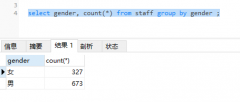How to connect to SQL Server from .Net Core without using Entity Framework?(如何在不使用实体框架的情况下从 .Net Core 连接到 SQL Server?)
问题描述
如何在不使用实体框架的情况下从 .Net Core 连接到 SQL Server?
How can we connect to SQL Server from .Net Core without using Entity Framework?
推荐答案
如果您对另一个答案中的 BaseDataAccess 类格式感到惊讶,并且参考了与我相同的文章,这里是格式良好的示例...希望它会为您节省一些时间
If you surprised with BaseDataAccess class format in another answer and referenced article same as me, here is well formatted example... hopefully it will save you some time
public class BaseDataAccess
{
protected string ConnectionString { get; set; }
public BaseDataAccess()
{
}
public BaseDataAccess(string connectionString)
{
this.ConnectionString = connectionString;
}
private SqlConnection GetConnection()
{
SqlConnection connection = new SqlConnection(this.ConnectionString);
if (connection.State != ConnectionState.Open)
connection.Open();
return connection;
}
protected DbCommand GetCommand(DbConnection connection, string commandText, CommandType commandType)
{
SqlCommand command = new SqlCommand(commandText, connection as SqlConnection);
command.CommandType = commandType;
return command;
}
protected SqlParameter GetParameter(string parameter, object value)
{
SqlParameter parameterObject = new SqlParameter(parameter, value != null ? value : DBNull.Value);
parameterObject.Direction = ParameterDirection.Input;
return parameterObject;
}
protected SqlParameter GetParameterOut(string parameter, SqlDbType type, object value = null, ParameterDirection parameterDirection = ParameterDirection.InputOutput)
{
SqlParameter parameterObject = new SqlParameter(parameter, type); ;
if (type == SqlDbType.NVarChar || type == SqlDbType.VarChar || type == SqlDbType.NText || type == SqlDbType.Text)
{
parameterObject.Size = -1;
}
parameterObject.Direction = parameterDirection;
if (value != null)
{
parameterObject.Value = value;
}
else
{
parameterObject.Value = DBNull.Value;
}
return parameterObject;
}
protected int ExecuteNonQuery(string procedureName, List<DbParameter> parameters, CommandType commandType = CommandType.StoredProcedure)
{
int returnValue = -1;
try
{
using (SqlConnection connection = this.GetConnection())
{
DbCommand cmd = this.GetCommand(connection, procedureName, commandType);
if (parameters != null && parameters.Count > 0)
{
cmd.Parameters.AddRange(parameters.ToArray());
}
returnValue = cmd.ExecuteNonQuery();
}
}
catch (Exception ex)
{
//LogException("Failed to ExecuteNonQuery for " + procedureName, ex, parameters);
throw;
}
return returnValue;
}
protected object ExecuteScalar(string procedureName, List<SqlParameter> parameters)
{
object returnValue = null;
try
{
using (DbConnection connection = this.GetConnection())
{
DbCommand cmd = this.GetCommand(connection, procedureName, CommandType.StoredProcedure);
if (parameters != null && parameters.Count > 0)
{
cmd.Parameters.AddRange(parameters.ToArray());
}
returnValue = cmd.ExecuteScalar();
}
}
catch (Exception ex)
{
//LogException("Failed to ExecuteScalar for " + procedureName, ex, parameters);
throw;
}
return returnValue;
}
protected DbDataReader GetDataReader(string procedureName, List<DbParameter> parameters, CommandType commandType = CommandType.StoredProcedure)
{
DbDataReader ds;
try
{
DbConnection connection = this.GetConnection();
{
DbCommand cmd = this.GetCommand(connection, procedureName, commandType);
if (parameters != null && parameters.Count > 0)
{
cmd.Parameters.AddRange(parameters.ToArray());
}
ds = cmd.ExecuteReader(CommandBehavior.CloseConnection);
}
}
catch (Exception ex)
{
//LogException("Failed to GetDataReader for " + procedureName, ex, parameters);
throw;
}
return ds;
}
}
这篇关于如何在不使用实体框架的情况下从 .Net Core 连接到 SQL Server?的文章就介绍到这了,希望我们推荐的答案对大家有所帮助,也希望大家多多支持编程学习网!
本文标题为:如何在不使用实体框架的情况下从 .Net Core 连接到 SQL Server?


基础教程推荐
- 从字符串 TSQL 中获取数字 2021-01-01
- 使用 VBS 和注册表来确定安装了哪个版本和 32 位 2021-01-01
- MySQL 5.7参照时间戳生成日期列 2022-01-01
- ORA-01830:日期格式图片在转换整个输入字符串之前结束/选择日期查询的总和 2021-01-01
- 如何在 CakePHP 3 中实现 INSERT ON DUPLICATE KEY UPDATE aka upsert? 2021-01-01
- MySQL根据从其他列分组的值,对两列之间的值进行求和 2022-01-01
- 带更新的 sqlite CTE 2022-01-01
- CHECKSUM 和 CHECKSUM_AGG:算法是什么? 2021-01-01
- 带有WHERE子句的LAG()函数 2022-01-01
- while 在触发器内循环以遍历 sql 中表的所有列 2022-01-01

















